Tuesday, 28 August 2018 |
08:45–09:20 (Grand Ballroom)

The Times They Are A-changin'! Or Are They?
Martin “Marty” Cooper, Wireless Pioneer, Business Leader, and Father of the Cell Phone
Wireless technology has evolved dramatically over the last 50 years, and yet many of the challenges of the future are familiar.
Biography—Marty Cooper famously led the Motorola team that developed the first mobile cellular telephone. He led the regulatory effort that resulted in a competitive cellular service that could serve handheld portable cell phones, a model adopted by most countries. Marty graduated from the Illinois Institute of Technology with a bachelor’s degree in electrical engineering in 1950 and served in the Navy during the Korean conflict. He joined Motorola in 1954. He earned a master’s in electrical engineering (1957) and received an Honorary Doctorate from IIT where he serves as a Life Trustee. At Motorola, Marty and his teams created the Pageboy II, the first nationwide high capacity paging system (1970), and the first public land-mobile trunked radio system (1973) as well as numerous wireless innovations. He became a division manager and ultimately served as vice president and director of research (1978–83) for the company.
3 April 1973: Marty introduced the DynaTAC phone at a press conference in New York City. To make sure that it worked before the press conference, he placed the first public cell-phone call, to Joel Engel, head of AT&T Bell Labs rival project, and gloated that he was calling from a portable cellular phone. After a decade of further development and resolving regulatory challenges, Motorola introduced the first portable cell phone for consumers, the DynaTAC 8000x in 1983.
Marty then left Motorola to co-found Cellular Business Systems, Inc. (CBSI), which became the leading company in billing cellular phone services. In 1986 he and his partners sold CBSI to Cincinnati Bell for $23 million. Marty and his wife, Arlene Harris, then founded Dyna, LLC, the central organization from which they launched other companies including ArrayComm (developed multi-antenna arrays for wireless systems), and GreatCall (created the Jitterbug a cell phone with its large buttons and simple features meant for the elderly, recently sold to Samsung).
Widely recognized for his technical leadership, entrepreneurial and business achievements, and his inventions and publications, other achievements include: Life IEEE Fellow, IEEE VTS President, IEEE Centennial Medal (1984), Charles Star Draper Prize (2013), Prince Asturias Award for Scientific and Technical Research (2009), Marconi Prize (2013). He is also widely known for introducing the “Law of Spectral Efficiency” now known as “Cooper’s Law”.
09:20–09:55 (Grand Ballroom)

Mobility and the Continued Importance of Efficiency
Ann Schlenker, Director (Argonne National Laboratory Center for Transportation Research)
The transportation industry is experiencing an inflection point for new automotive technology, connected and automated vehicles, mobility service companies, and electrification. Simultaneously, societal expectations are evolving for urbanization growth and an on-demand service economy. Efficiency and optimization opportunities exist at multiple levels in the value chain of mobility and can yield tangible benefits to the consumer.
The presentation will provide external drivers that are encouraging the shift from a transportation-centric focus to mobility, and highlight research examples that demonstrate the need to remain centered on efficiency at various scales of technologies, systems and services.
Biography—Ms. Ann Schlenker is the Director for the Center for Transportation Research at Argonne National Laboratory. Ms. Schlenker’s applied research area is actively seeking to improve efficiency at a component, vehicle and transportation system level, while preserving transportation consumer choice, affordability and domestic economic growth. Her responsibilities include evaluating the energy and environmental impacts of advanced technologies and new transportation fuels. Her portfolio includes early stage fundamental and applied Light and Heavy Duty vehicle research that is informed by collaborative partnerships which develop, demonstrate and deploy new technologies. Previously, Ms. Schlenker spent more than 30 years with Chrysler Engineering in Product Developments, serving in a variety of executive positions.
09:55–10:30 (Grand Ballroom)
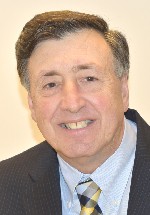
Warning: Undefined variable $title in /home3/sederunt/public_html/ieeevtc/conf-admin/vtc2018fall/plenaries.inc.php on line 505
Julius Knapp, Chief, Office of Engineering and Technology (FCC, USA)
Biography—Julius Knapp has been with the FCC for 43 years and since 2006, has served as the Chief of the FCC’s Office of Engineering and Technology (OET) OET is the Commission’s primary resource for engineering expertise and provides technical support to the Chairman, Commissioners and FCC Bureaus and Offices.
He received the FCC’s Silver and Gold Medal Awards for distinguished service at the Commission as well as the Presidential Distinguished Rank Award for exceptional achievement in the career Senior Executive Service. Mr. Knapp has been the recipient of the Eugene C. Bowler award for exceptional professionalism and dedication to public service; the Federal Communications Bar Association Excellence in Government Service Award; the WCAI Government Leadership award; the National Spectrum Management Association Fellow Award; the Association of Federal Communications Consulting Engineers E. Noel Luddy Award; and, the Satellite Industry Association Satellite Leadership in Government Award. Mr. Knapp is a Life Member of the IEEE. He received a Bachelor’s degree in electrical engineering from the City College of New York in 1974.
11:00–12:30 (Grand Ballroom)
Industry Sessions Panel: Telco Executives Give Perspectives on Markets, Technology and Customer Reqs
| Moderator: | Brian K. Daly, Assistant Vice President, Standards & Industry Alliances (AT&T) |
| Panelists: | Farooq Bari, Lead Member of Technical Staff (AT&T) |
| Egil Gronstad, Senior Director, Technology Development and Strategy (T-Mobile USA) | |
| Toshiro Kawahara, Senior Manager responsible for 5G Deployment Strategy (NTT DOCOMO, Inc.) | |
| Javan Erfanian, Senior Associate Director--Technology Research & Strategy (Bell Mobility, Canada) | |
| Jason Koch, Senior Vice President, Product Strategy (Verizon) |
Summary—This panel was organized by Brian K. Daly, Director Core Network & Gov't/Regulatory Standards (AT&T). |
|
Biographies | |
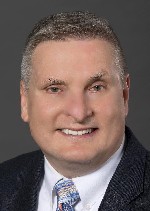 Brian K. Daly, Assistant Vice President, Standards & Industry Alliances, is a globally recognized technology visionary and thought leader for emerging technologies, focusing on frontiers of technology that transform the industry. Brian identifies the impact of disruptive innovation and telecommunication regulation on the industry, and shapes the development of standards in an open source world to enable the next generation software defined ICT end to end ecosystem. His current focus is 5G next generation networks and softwarization, public safety initiatives including mission critical services for FirstNet, earthquake early warning, and wireless emergency alerts, IoT including C-V2X, Smart Cities, and UAS/UAVs, Cybersecurity, and national security/emergency preparedness/critical infrastructure protection. Over the years he has contributed to standards for 3GPP, ATIS, TIA, GSMA, 5G Americas, IEEE, NGMN, NENA, and oneM2M. He is a leading contributor to ATIS Board, TOPS Council and Standards Committee initiatives, resulting in the implementation of key industry standards. |
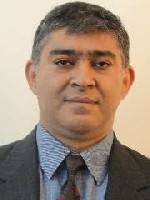 Farooq Bari is Lead Member of Technical Staff with AT&T. He holds a Ph.D. in electrical and computer engineering from the University of British Columbia, Vancouver, Canada. His general area of interest is in emerging technologies with a recent focus on 5G, IoT and open source initiatives. Over the years he has contributed to standards related work in 3GPP, IETF, IEEE, GSMA, NGMN, ATIS, 5GA and Onem2m. He has also served in various industries leadership positions such as on IEEE SA Standards Board and its committees, chairing collaborative work between GSMA and WBA on Wi-Fi / cellular integration, and as guest editor for industry publications. Before working on industry standards, he was a research engineer involved in R&D and new product development in the area of embedded systems. |
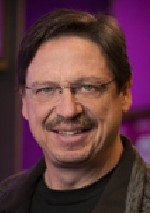 Egil Gronstad is the Senior Director of Technology Development and Strategy for T-Mobile USA. In this role, Egil is leading all Advanced Radio Technology Planning, Innovation and Development activities, Spectrum evaluations and strategies and radio related standards activities to secure long term alignment between business objectives and spectrum/technology availability and ecosystem. |
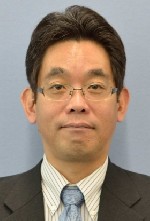 Toshiro Kawahara received his BS. and MS degrees in the Department of Electronics at Kyoto University, Kyoto, Japan, in 1989 and 1991, respectively, and his MS in Management of Technology from Massachusetts Institute of Technology's Sloan School of Management. In 1991, he joined NTT Radio System Laboratories, and in 1992 he transferred to NTT Mobile Communications Network, Inc. (now NTT DOCOMO, Inc.). |
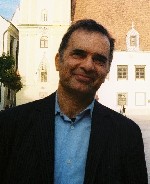 Javan Erfanian In his role within Wireless Network at Bell Canada, Javan primes the wireless technology strategic direction, while working with the global industry, various forums, and the research community. In particular, he has been contributing to the work programs through NGMN, most recently the 5G global initiative, for which he has been the Co-Lead, and the 5G White Paper Chief Editor. Javan has taught many academic programs, with research publications and many citations. He has been an IEEE Communications Society Distinguished Speaker for many years, and is a steering board member of the Wireless World Research Forum (WWRF). |
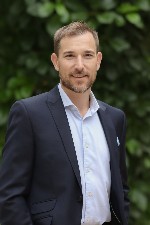 Jason oversees all product management and innovation roadmaps for the Verizon Connect portfolio including connected commercial vehicle, OEM and consumer solutions. Prior to Verizon Connect, Jason was one of the co-founders of Telogis, Inc. Jason is based in Aliso Viejo, California. |
12:30–14:00 (Grand Traditions Room)
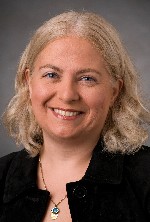
IEEE Women in Engineering (IEEE WiE) Luncheon
Aylin Yener, Professor of Electrical Engineering (Pennsylvania State University)
This is a special by-invitation event. Find out more about <a href="http://wie.ieee.org/" target="_blank">IEEE Women In Engineering</a>.
Biography—Dr. Aylin Yener is a professor of Electrical Engineering at The Pennsylvania State University since 2010, and a Dean’s fellow since 2017. She joined Penn State’s faculty as an assistant professor in 2002, and was an associate professor 2006-2010. She was a visiting professor of Electrical Engineering at Stanford University in 2016-2018 and a visiting associate professor in the same department in 2008-2009.
She received the B.Sc. degree in electrical and electronics engineering, and the B.Sc. degree in physics, from Bogazici University, Istanbul, Turkey; and the M.S. and Ph.D. degrees in electrical and computer engineering from Wireless Information Network Laboratory (WINLAB), Rutgers University, New Brunswick, NJ. Yener’s recognitions include the National Science Foundation CAREER award in 2003, and the 2014 IEEE Marconi paper award. She is a distinguished lecturer for the IEEE Vehicular Technology Society and the Communications Society. She is a fellow of the IEEE.
Yener’s service to IEEE includes having served as a technical program chair of various symposia in VTC, ICC, PIMRC and WCNC, an associate editor for the IEEE Transactions on Communications, an associate editor and an editorial advisory board member for the IEEE Transactions on Wireless Communications, and a senior editor for the Journal on Selected Areas in Communications. Her service to IEEE Information Theory Society includes having served as the student committee chair, the treasurer and the information theory school committee chair. She is currently a member of the Board of Governors for the Information Theory Society and a member of the IEEE fellows committee.
Yener’s research interests are in fundamental performance limits of networked systems, communications and information theory with applications to information theoretic physical layer security, energy harvesting communication networks, and caching systems.
14:00–15:30 (Grand Ballroom)
Industry Sessions Panel: Review Systems and Product Advances using 5G, IoT and AC Technologies
| Moderator: | Russell Gyurek, Director, IoT-CTO Group (Cisco) |
| Panelists: | Henrik Sahlin, Master Researcher (Ericsson) |
| Rao Yallapragada, Director of Advanced Technologies (Intel) | |
| Barry Einsig, Global Automotive and Transportation Executive (Cisco) | |
| Simone Redana, Head of Network & Architecture Research Group (Nokia Bell Labs) |
Summary— |
|
Biographies | |
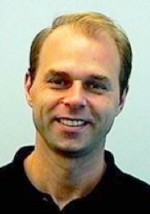 Russell Gyurek is currently the Director, IoT-CTO and Industries at Cisco. He has over 25 years of networking related technology experience, the majority in leadership positions. Russ’ range of expertise includes; IoT/connectivity of things, analytics and big data, cloud, optical networking technologies, broadband architectures and related technical policy, and emerging market development. He has held various leadership roles in creating strategy and direction in these areas. In Russ’ current role he is responsible for technology leadership, market development and partner due diligence & enablement related to IoT. |
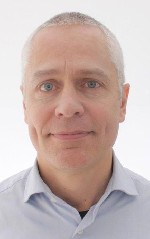 Henrik Sahlin is active within the section of antenna systems at Ericsson Research, Gothenburg, Sweden. He has actively participated in 3GPP (Third Generation Partnership Project) standardization for LTE (Long Term Evolution) and NR (New Radio, 5G) with a focus on initial access and reduced latency with physical layer design. |
|
Biography for Rao Yallapragada to follow. |
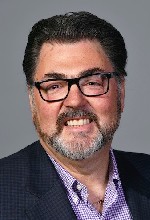 Barry Einsig is the Global Automotive and Transportation Executive in Cisco’s Automotive and Connected Car Group responsible for driving the growth strategy, business planning, thought leadership and solutions designs and validation for all modes of transportation.
|
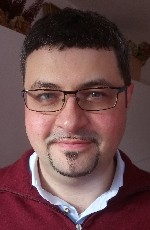 Dr. Simone Redana is Head of Network & Architecture Research Group in Nokia Bell Labs and Chairman of the 5GPPP Architecture Working Group. His research interests are on novel architecture solutions for 5G era and 5G business acceleration for verticals. He is currently responsible for the Standardization Research on E2E Network Architecture and Automation in Nokia, leading a group of experts on Radio Access Network (RAN) and Core Network (CN) protocols, architecture and automation. He contributed in 3GPP to the standardization of Self Organizing Network (SON) and Relays for Long Term Evolution (LTE). |
16:00–17:30 (Grand Ballroom)
Industry Sessions Panel: Regulation-Standards Barriers and Opportunities
| Moderator: | Brian K. Daly and Russell Gyurek |
| Panelists: | Jim Lansford, Director, standards group for V2X and Wi-Fi (Qualcomm) |
| Martin C. Dolly, 3GPP/Wireless Security Expert (AT&T Labs) | |
| Stephen Hayes, Director of Standards (Ericsson North America) | |
| Tom Anderson, Senior Technology Consultant (ATIS) | |
| Jason Smith, Senior Director, Device Check, IMEI Services (GSMA) | |
| Paul Anuszkiewicz, Vice President--Spectrum Planning (CTIA-The Wireless Association) |
Summary—This panel was organized by Brian K. Daly, Director Core Network & Gov't/Regulatory Standards (AT&T) and Russell Gyurek, Director, IoT-CTO and Industries (Cisco). |
|
Biographies | |
|
See above for biographies on Brian K. Daly and Russell Gyurek. |
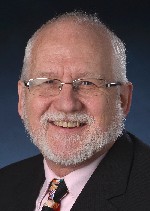 Dr. Jim Lansford is a Director in the standards group at Qualcomm, responsible for V2X and Wi-Fi standards and strategy. He has over 35 years of experience in communications systems, digital signal processing, and strategic business development. Prior to its acquisition by Qualcomm in August 2015, he was a Fellow in the Global Standards Group at Cambridge Silicon Radio (CSR). |
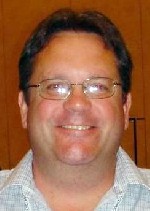 Martin C. Dolly has been with AT&T Bell Laboratories/AT&T Labs for 33 years, where his areas of expertise being in security, signaling, and services, particularly Government Priority Services. |
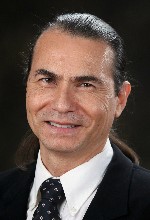 Stephen Hayes is the Director of Standards for Ericsson in North America. He has worked on various cellular issues over the last 20 years and been heavily involved in the evolution of the 3GPP family of technologies. His current focus includes the ATIS committees and 3GPP. He is also involved in several US advisory groups such as the FCC TAC (Technical Advisory Committee). |
|
Biography for Tom Anderson to follow. |
|
Biography for Jason Smith to follow. |
 Paul Anuszkiewicz is CTIA's Vice President for Spectrum Planning and Technology Standards. He is responsible for technology and technical matters concerning spectrum advocacy, spectrum allocation for the network evolution to 5G and other technical areas to aid CTIA's members and as a technical resource to policy makers. He has over 30 years of technology planning, network engineering and operational experience. |

